The Ministry of Culture of Latvia presents LANDSCAPE OF DEFENCE, a space curated by Liene Jākobsone, Ilka Ruby and designed by Sampling and Nomad architects: the Pavilion of Latvia at the 19th International Architecture Exhibition of La Biennale di Venezia (May 10th – November 23rd, 2025).
Bridging the gap between complex geopolitics and everyday realities, LANDSCAPE OF DEFENCE will be presented at the 19th International Architecture Exhibition – La Biennale di Venezia.
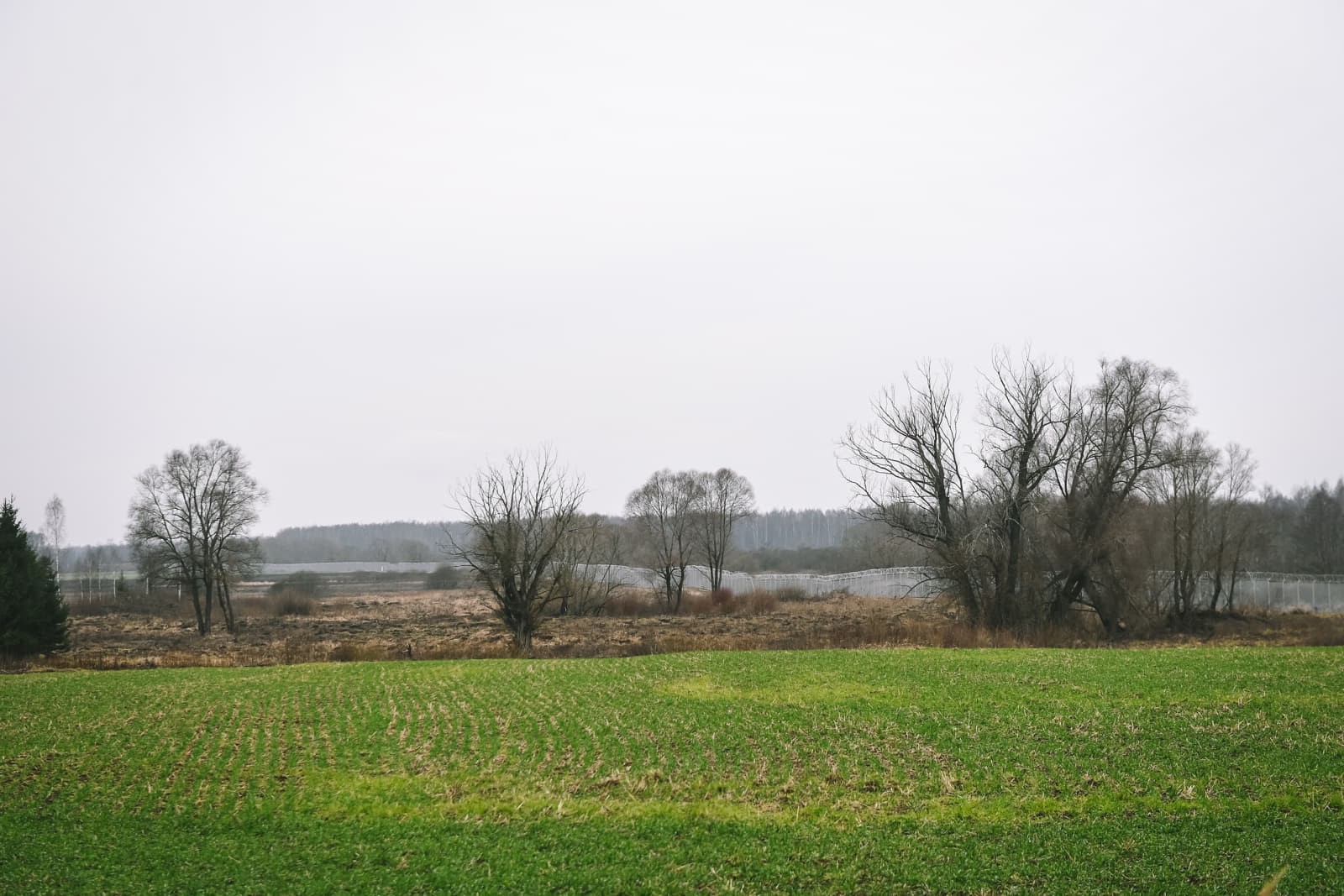
Zogs
The fence is a physical line in the landscape that defines the border making it visible in a way it never has been before. For a visitor, it is a strikingly clear and frightening demarcation of ‘us’ versus ‘them’. For the locals, it can simply be a new view out of the window, but it can also mean no longer being able to visit their relatives or family graves on the other side. Some have had parts of their land expropriated to make way for this infrastructure. When asked about the sense of security, people on the border are sceptical: they claim to have nothing to fear, adding that the fence can at best keep back wild animals. Is this their way of dealing with the reality or the effect of Russian propaganda?
What does it mean to live on NATO’s external border in times of geopolitical conflict? How do defence measures affect the people and the territory? The pavilion investigates the spatial and social landscape along Latvia’s eastern border, highlighting the reality of living on NATO’s periphery.
Curated by Liene Jākobsone and Ilka Ruby, and designed by Sampling and Nomad architects, the pavilion aims to offer the international architectural discourse a study of the relationship between military defence and the spatial condition of the Latvian context.
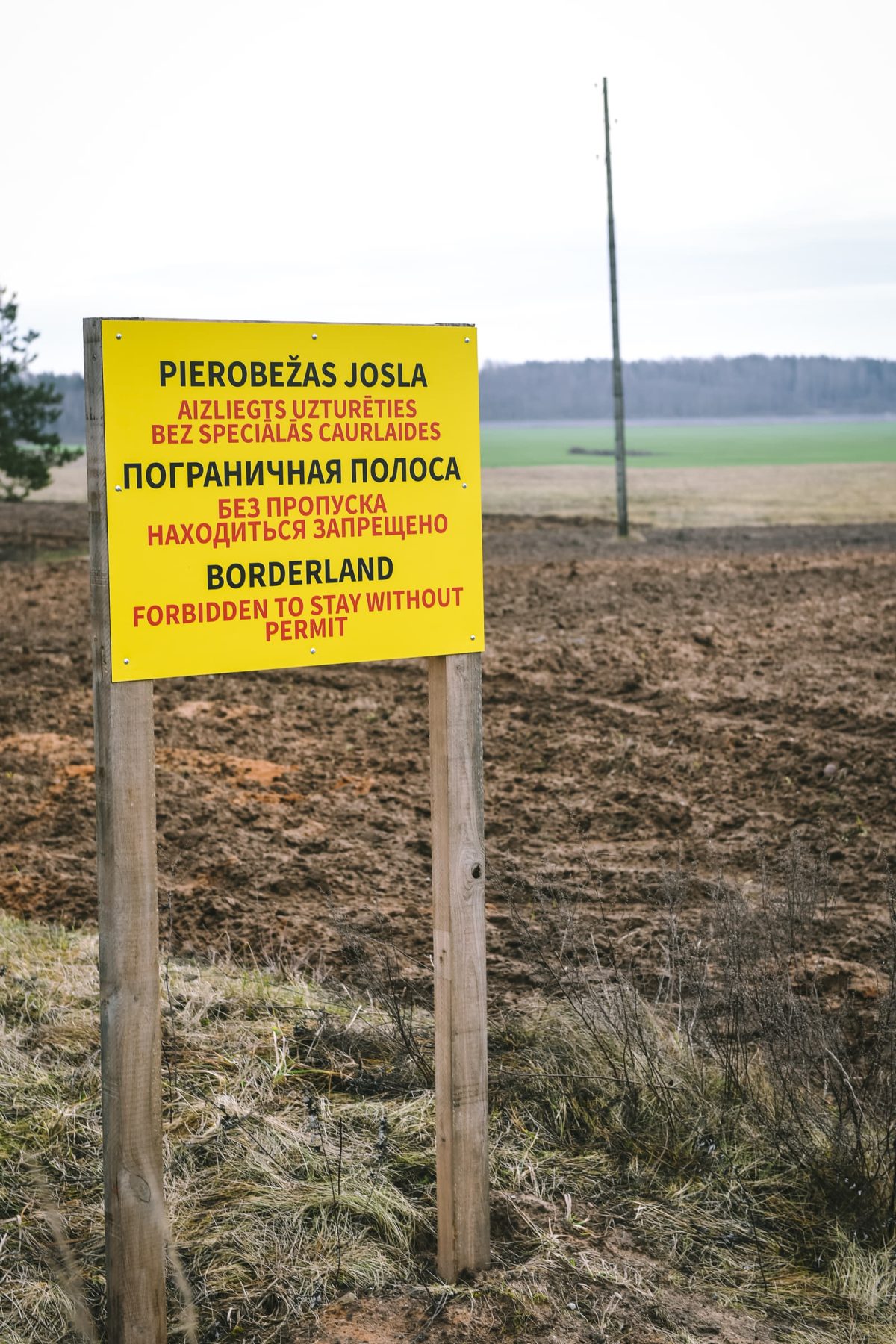
Zime
All along the border there is a 2 kilometre wide strip of land with restricted access. There are signs on the roads to remind people of the requirement to carry the special permit, but otherwise it remains an area on the map with no evidence of it in nature: people live there, they cultivate the fields, pick mushrooms in the forests and go about their daily activities. The locals have long-term permits, while others who wish to enter the area must apply for a permit for a specific area and a specific period of time. Recently, a rotation system has been introduced for the border guards – they are transferred to regions further away from their place of origin, and the place of transfer changes periodically. Locals mention that as a result, they are sometimes stopped for document checks on their daily commute, whereas before they were never checked by the border guard, as they knew each other personally.
The exhibition provides a rare look at the borderland of a borderland.
As geopolitical tensions rise, and fortification of the border between Latvia and Russia and Belarus has picked up pace, national and NATO-wide defence becomes a lived experience, not just a government directive. Through architectural discourse, the curators explore the interplay between geopolitical tension, spatial conditions, and societal resilience.
“It’s about transforming fear into reassurance,” says Jākobsone, adding: “National defence is an ongoing process to be acknowledged and accepted.”
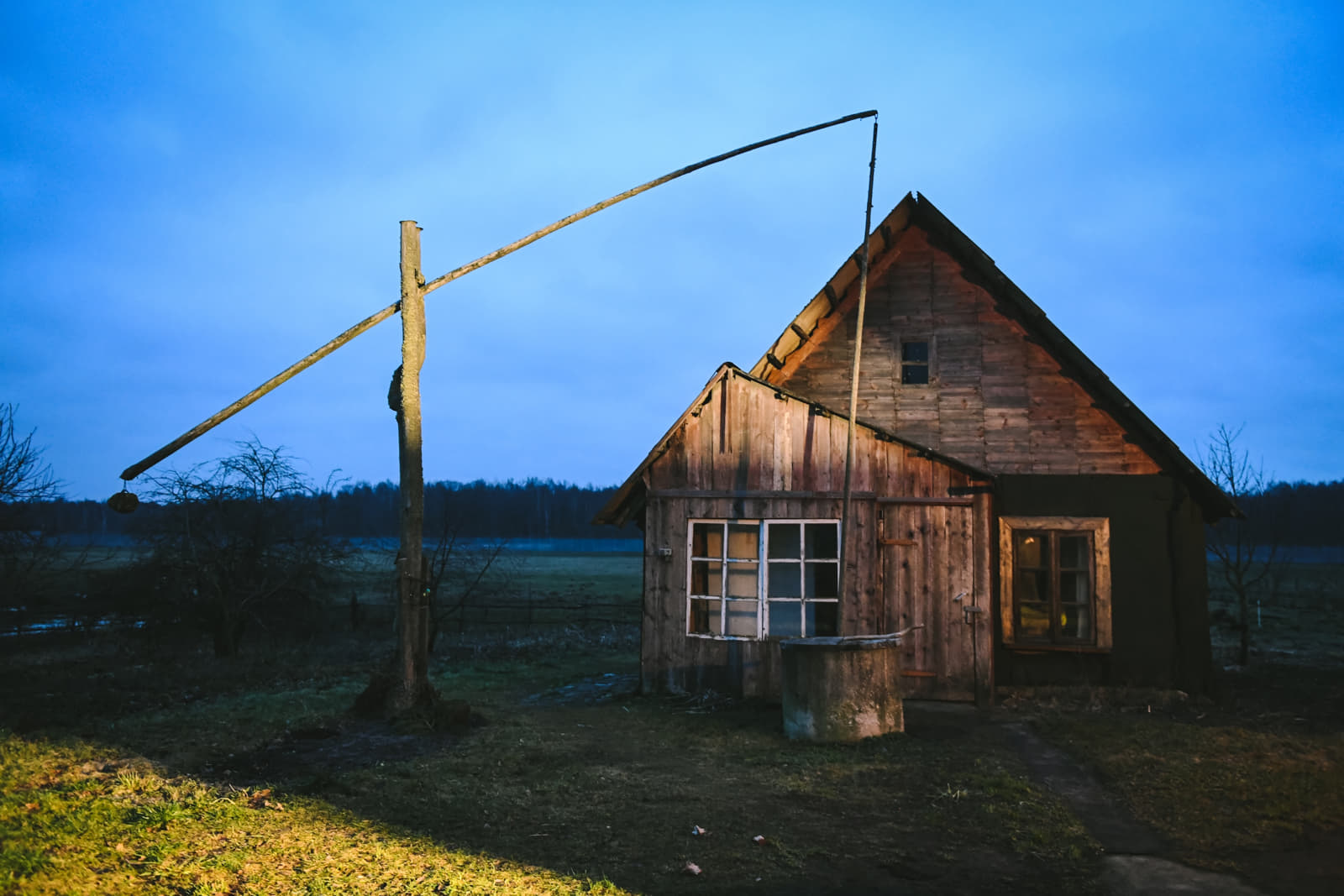
Maja
Although the area along the border is not densely populated, some houses are only a few metres from the fence. Sometimes their owners inadvertently step into the range of the sensors, triggering an alarm and sending border guards to check the situation. Such incidents are taken very lightly, and in general people are already used to the border guard patrolling in their backyards.
Opening up the conversation and bringing spatial qualities into the awareness of policy makers and military defence specialists, the curators weave a compelling narrative from the constant presence of an attack threat and the unexpected poetics of defence measures such as anti-tank “hedgehogs” and concrete “dragon’s teeth”.
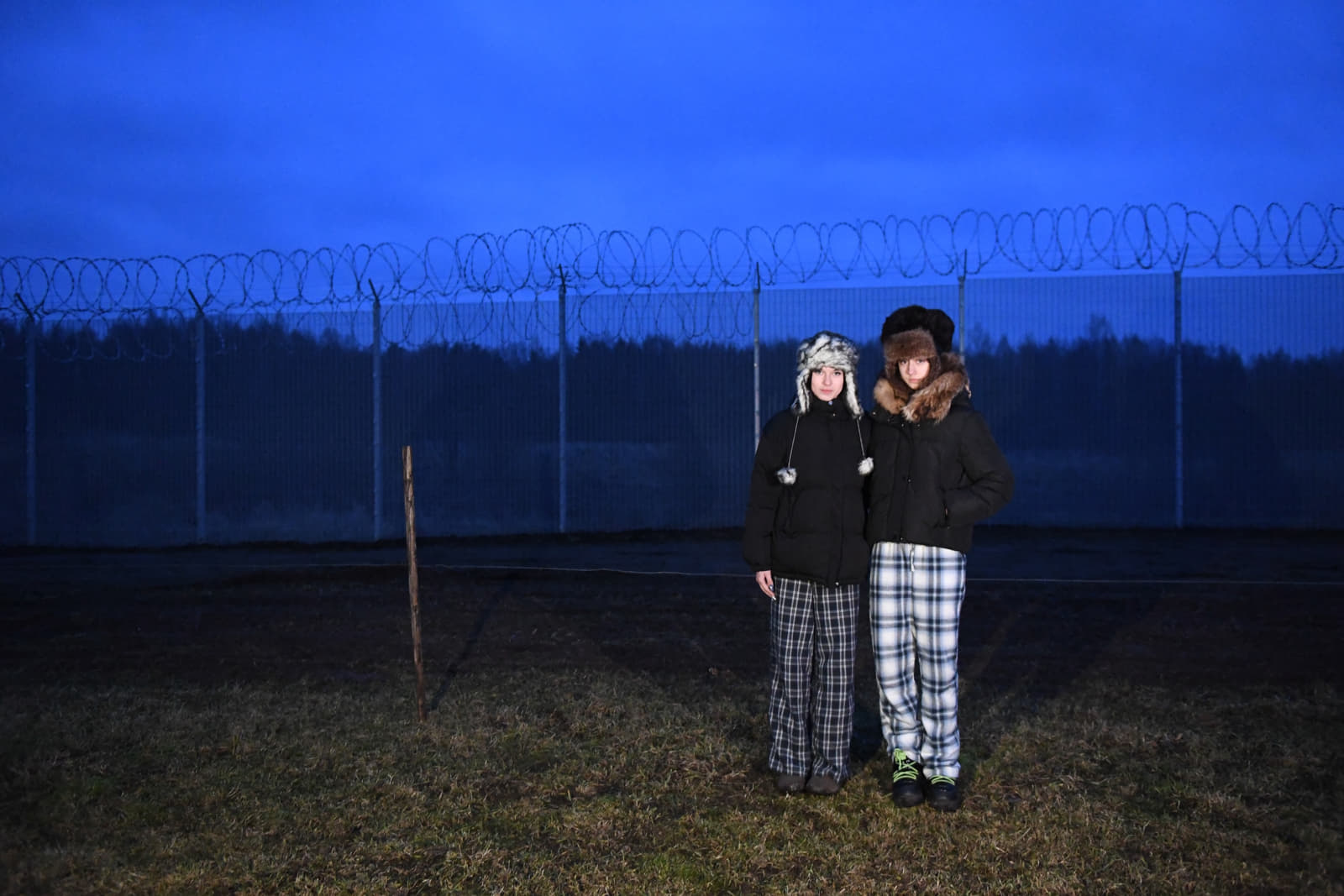
Meitenes
Esmeralda, whose family lives in the house on the border, and her friend Gabriela show us the fence during our visit on a late January afternoon. It is already dark and we have to be careful not to touch the electric shepherd’s wires or enter the area covered by the border fence’s sensors. Reflecting on recent geopolitical developments and the infrastructure on the ground, the girls say that the fence instills fear rather than reassurance. They believe that adults should listen more to young people, as they have access to the internet and social media. Then the older people would realise that “all these wars nowadays are only caused by politics and money” and that “they want to involve everyone in the war”. Young people “are not that stupid” and won’t go to war for that.
“In Berlin, where I live, you still feel every day how the fall of a systemic and physical border can change a city’s urban fabric. That frontier has since moved to Latvia’s – and Europe’s – border with Russia. Our goal here is to understand the effects that such fortifications can have on landscapes and lives,” says Ruby.

Baznica
The Catholic church in Baltinava, an impressive building for a village of around 400 people two kilometres from the Latvian-Russian border, boasts incredibly rich Christmas decorations when we visit in late January. Although the rest of the country is not particularly religious, for the people of Latgale—Latvia’s south-eastern region—Catholicism is a part of their identity, even more important than ethnicity, nationality or citizenship. This partly explains their world view, where national borders and recent geopolitical events are viewed from the perspective of a wider region that includes Russia and Belarus.
Liene Jākobsone, PhD, is an architect, designer, founding partner of the Riga-based architecture and design studio Sampling, senior researcher and director of the Institute of Contemporary Art, Design and Architecture at the Art Academy of Latvia.
Ilka Ruby is a Berlin-based curator, author, and co-founder of Ruby Press, an independent publishing house specializing on architecture and spatial practices. Besides her extensive exhibition curation portfolio, she is a frequent lecturer and moderator at architecture discussions and events.
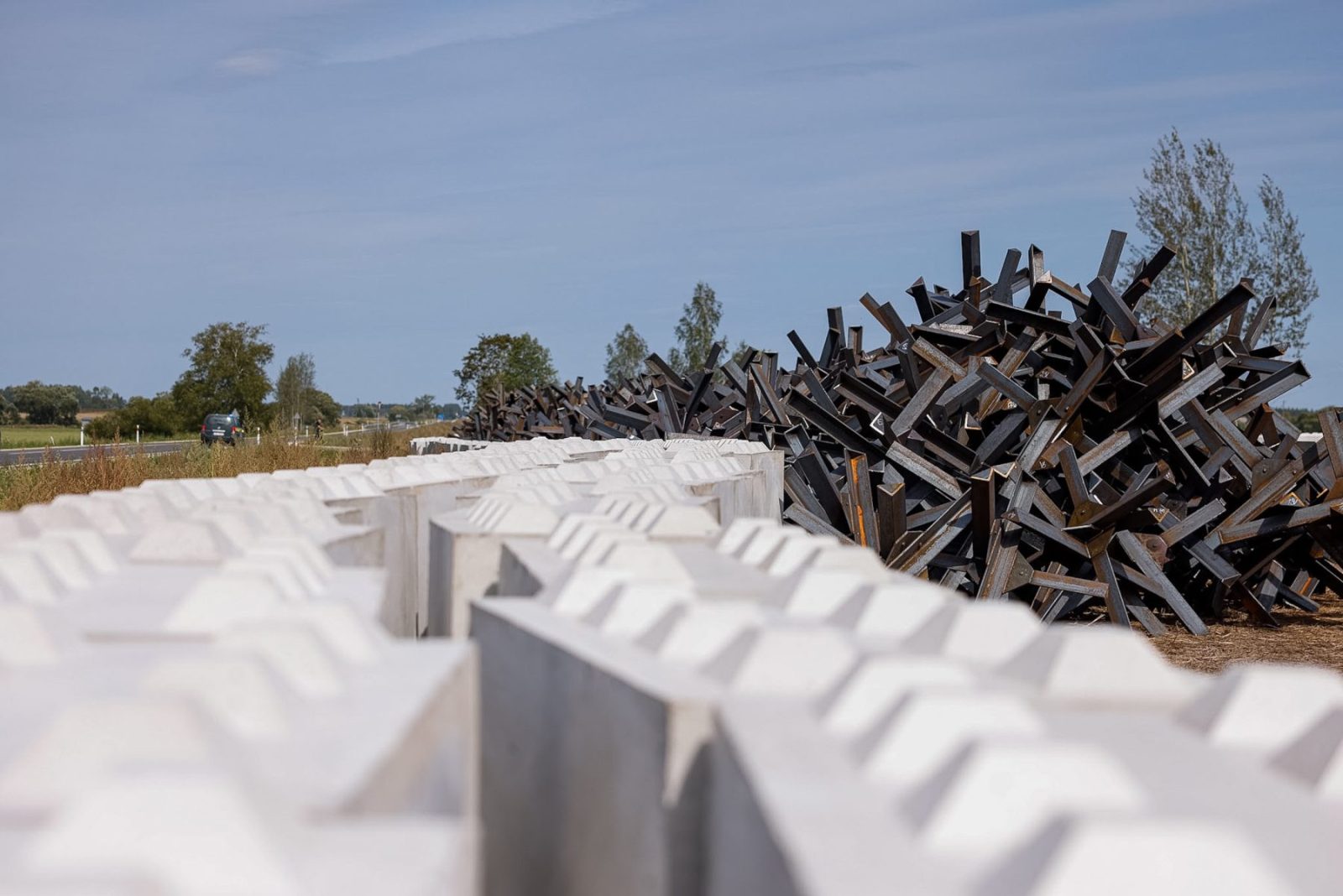
Ezi
Elements of defence, such as anti-tank ‘hedgehogs’ and concrete blocks, are placed in visible locations along the main highways several kilometres from the border. This may reassure passers-by that the necessary infrastructure is in place to block traffic at short notice, but this extremely brutal layout may also make people fear the proximity of war.
This seemingly temporary arrangement is designed to deter attack and thus become permanent. But from a practical and aesthetic point of view, how will these objects age over the years?
“The exhibition aims to offer the international architectural discourse a study of the relationship between military defence and spatial condition in the Latvian context.”
“We want to draw attention to the impact of defence measures on people and the landscape. It is an invitation not only to architects, but also policy makers and military defence specialists to take part in the conversation on spatial qualities, encouraging them to consider the physical footprint of defence strategies on a territory and the emotional impact on its population.” – Ilka Ruby & Liene Jākobsone
“In Latvia, in response to the recent geopolitical events, work is underway to strengthen the physical borders of the country to prevent a massive military attack by land. To this end, various defence elements, each with a specific location and function, are ready to be deployed in a coherent system along the country’s eastern external border at any time. These include fences, anti-tank “hedgehogs”, concrete “dragon’s teeth” and anti-tank trenches.”
Facts & Credits
Pavilion of Latvia LANDSCAPE OF DEFENCE
Location Arsenale di Venezia, Artiglierie, Venice, Italy
Exhibition Duration 10 May – 23 November 2025
Opening hours Closed on Mondays (except 12 May and 17 November)
Commissioner Jānis Dripe, Ministry of Culture of the Republic of Latvia
Curators Liene Jākobsone, Ilka Ruby
Exhibitors SAMPLING (Manten Devriendt, Liene Jākobsone), NOMAD (Marija Katrīna Dambe, Florian Betat)
Project Management Liene Jākobsone
Communication International: The Architecture Curator, Latvian: Laura Ziemele
Translation Laura Ziemele, Rita Tura
Thanks to Laine Nameda Lazda, Andreas Ruby, Solvita Kārkliņa, Zane Saulīte-Zvaigzne, Elīna Kursīte, Normunds Tirāns, Jans Veļičko, Marco Peroni, Andrea Cassani, Siim Porila, Laura Mārtinsone
READ ALSO: António Enes 13: Rehabilitation of a Modernist Building in Lisboa, Portugal by Pedro Carrilho Arquitectos